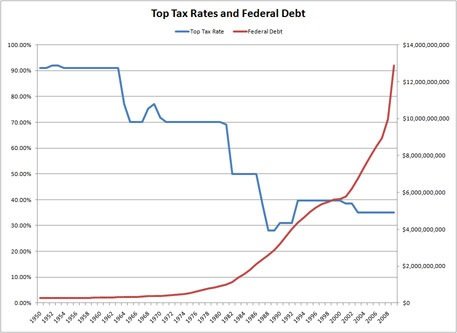So what I've determined is that there's really no downside to taking SS early if you believe the i-orp simulation. I'm not quite done with the analysis, though. What I need to do is, rather than run my rather complicated "real numbers" through the tool, I need to try putting a simplified set through and chuck that output into a spreadsheet to make sure I agree with what it's doing.
The analysis you did will be highly sensitive to the assumed rate of growth of your portfolio assets. Taking SS early comes out very well if we assume a high rate of growth in the portfolio (since your withdrawals of those assets is reduced by the SS check). The larger that a person's SS benefit is in relation to their portfolio withdrawals, the higher this effect will be.
4 observations:
1) I-orp is a fine tool for what it does, but it has a very simplistic growth model for assets. The portfolio grows by the same amount every year--no drops, no spikes. Compare this to FIRECalc. And the default growth rate for equities in i-orp is 7%, (5% real). That's pretty generous, IMO, right now.
2) When folks have done similar comparisons of taking SS at 62 vs 70 using FIRECalc, IIRC the results depended a lot on the AA dedicated to equity.
3) "Break even" or "which approach gives me the most money on average" is a worthwhile metric if we are looking at donating every penny to charity upon our death. In that case, only the expected average amount matters: 0 is bad, 2 million is good, and 1 million is exactly 1/2 as good as 2 million. If we instead need to support our spending in old age, the "utility" of each monthly dollar isn't constant, and the amount needed to support baseline spending (first $4000/mo?) has a lot more utility (is a lot more important to us) than dollars above that. Very few retirees have 100% of their funds in equities, but that is exactly what everyone would do if they wanted to maximize their absolute expected number of dollars, on average. Instead, we virtually all pick an AA that sub-optimizes absolute expected average returns in favor of a mix that we hope will do the best job of assuring we have very high likelihood having "enough." The SS decision should be made the same way, IMO.
4) In consideration of 1-3 above, what if investment returns are crummier than expected? That's the most difficult case. I'm not too interested in the average expected ending balance of a model, I want to give us the best chance to avoid a real catastrophe. And that's where, IMO, taking SS later
may provide a higher expected inflation-adjusted spendable amount, for as long as either member of a couple lives.
It's not a slam-dunk either way, but it does deserve some careful analysis, which you are evidently doing. I've got about a decade to think on it.

